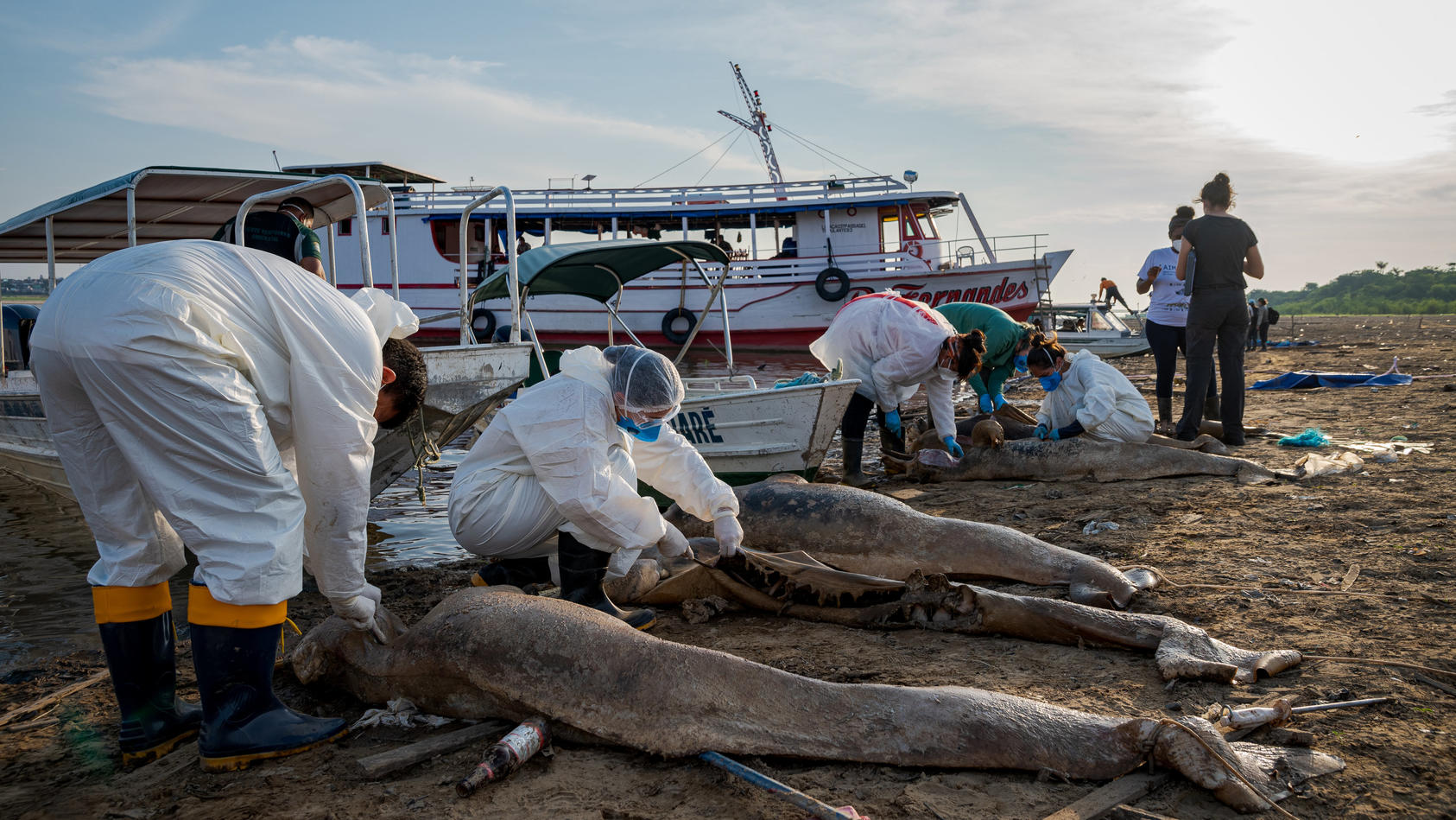Amazon River dolphins are the largest river dolphins. They are approximately 2 to 2.5 meters tall and weigh between 85 and 185 kilograms. “Amazon River dolphins are exposed to many pressures, such as the effects of hydroelectric plants, mercury pollution and conflicts with humans,” said Mariana Paschoalini Frias of the environmental organization WWF.
Dolphins are not the only ones suffering: the drought has reached such extreme proportions that recently one of Brazil’s most important hydroelectric plants had to temporarily stop operating due to low water levels in the Rio Madeira River. The Santo Antônio hydroelectric plant, near Porto Velho, in the state of Rondônia, is one of the largest in Brazil. In times of drought, electricity becomes scarce. It also makes the case for strong intervention in the climate crisis.
Reading advice: How heat and climate change affect our wildlife
Nine countries in South America and Asia now want to prevent the extinction of the last river dolphins. State representatives signed a joint declaration to protect these animals in the Colombian capital Bogotá. Bangladesh, Bolivia, Brazil, Cambodia, Colombia, Ecuador, India, Nepal and Venezuela are affected. Pakistan and Peru also joined the declaration, but only wanted to officially sign the document in the coming weeks.
The countries concerned agreed to improve water quality in dolphin habitat, create protected areas, combat overfishing and involve indigenous communities in affected regions in protecting the animals.
Due to pollution and fishing, the global population of freshwater dolphins has declined by 73% since the 1980s, according to the WWF. There are currently six different species living in rivers like the Amazon and Orinoco in South America or the Ganges and Mekong in Asia.
The forest no longer recovers: The Amazon rainforest is losing its resilience
Brazil – Water level of the Negro in the Amazon region at a record level
be, dpa, Edmar Barros
“The signed declaration on river dolphins allows for the long-term protection of river dolphin populations and areas, while promoting faster action by the State in the event of tragedies such as that of Lake Tefé” , said Dirk Embert of WWF Germany. , commenting on the agreement.
“This declaration is not just about saving river dolphins: it is also about improving the health of the great rivers that are the lifeblood of so many communities and economies, supporting important ecosystems from rainforests to to deltas,” said Stuart Orr, also of WWF. .
Interview with Greenpeace Brazil: Can the new Brazilian president Lula save the rainforest?
If you are interested in other weather, climate and science topics, you are in good hands at wetter.de. We can also particularly recommend the 7-day weather trend with the weather forecast for the coming week. This is updated daily. If you want to look further into the future, the 42-day weather trend is an option. We’ll see what happens in the coming weeks.
So that you don’t miss any weather on the go, we recommend our app wetter.de Apple And AndroidDevices.

“Unable to type with boxing gloves on. Web maven. Infuriatingly humble creator. Typical tv specialist. Music aficionado. Proud explorer.”







